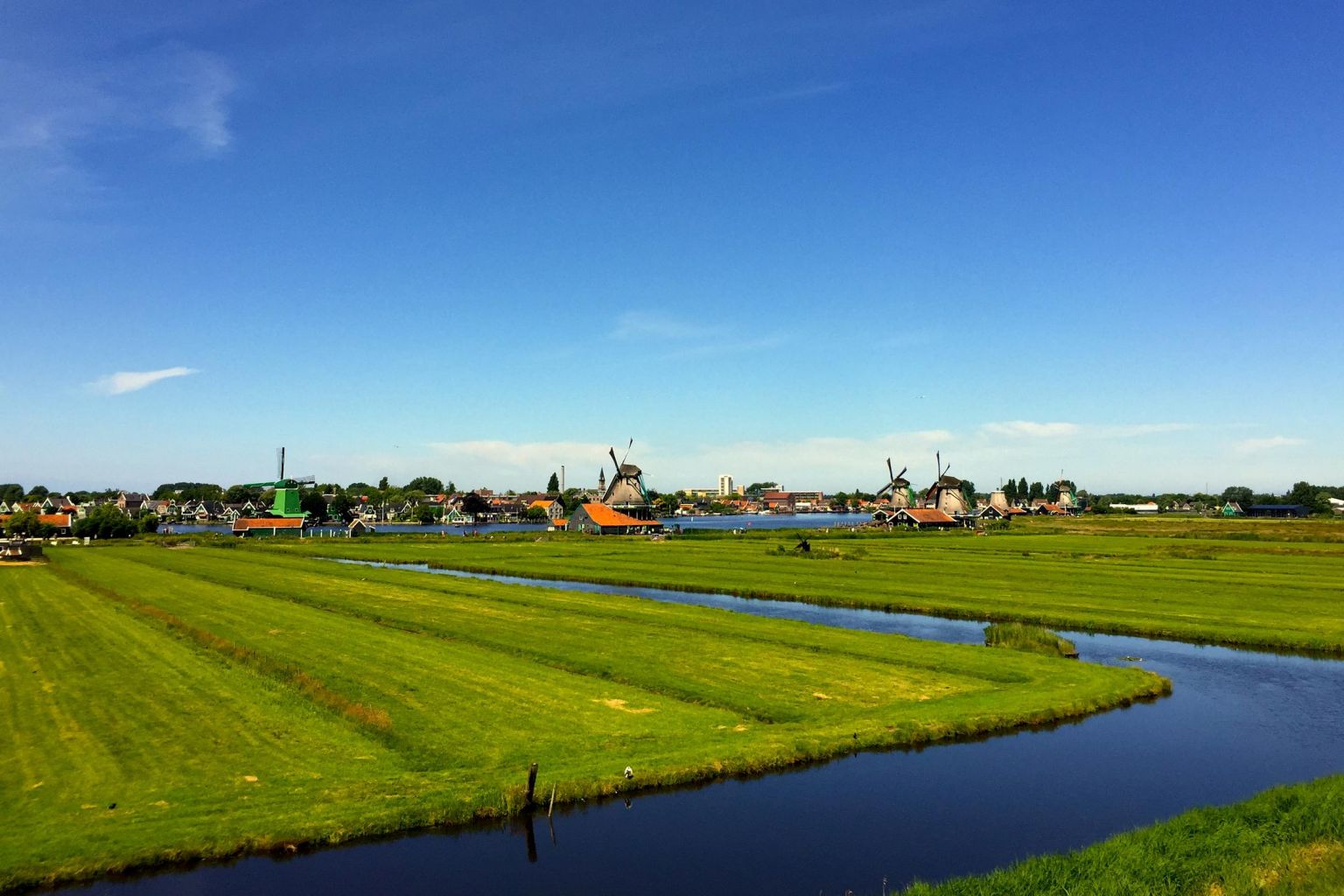National Day Rally 2019: Land reclamation, polders among ways S'pore looks to deal with sea-level rise
Sign up now: Get ST's newsletters delivered to your inbox

Polders in the Netherlands. Polders built along Singapore's eastern coastline could also protect the Republic from sea-level rise in a way that would also allow it to gain more land.
PHOTO: MINISTRY OF COMMUNICATIONS AND INFORMATION
Follow topic:
SINGAPORE - Rising sea levels are an existential threat for Singapore, and the Republic is considering major engineering works to tackle this.
Among the strategies being examined are empoldering, a land reclamation technique, along Singapore's eastern coast, as well as reclaiming a series of offshore islands there, said Prime Minister Lee Hsien Loong on Sunday (Aug 18).
He said all options will be carefully considered before a decision is made.
But in his speech, PM Lee also highlighted why sea-level rise is an issue that Singapore has to prepare for. He said: "We cannot lose a big chunk of our city and expect the rest of Singapore to carry on as usual."
Jurong Island, as well as the stretch comprising the city and the eastern coastline, are among the areas in Singapore most vulnerable to sea-level rise, he added.
Other than tackling the threat of rising sea levels, the strategies that PM Lee highlighted in his speech could have other benefits for Singapore, such as boosting the nation's water security and increasing land availability.
Reclaiming a series of offshore islands from Marina East to Changi could, for example, help increase Singapore's water resilience, said PM Lee.
"(We could) connect them up with barrages, and create a freshwater reservoir, similar to Marina Reservoir. National water agency PUB will like this solution because it will enhance our water resilience," he said.
Polders built along Singapore's eastern coastline could also protect the Republic from sea-level rise in a way that would also allow it to gain more land.
Polders refer to tracts of land that lie below sea level. They are constructed by first building a dyke around the area to be reclaimed from the sea and then draining water from it. Water levels in the polder are then controlled by drains and pumps.
"(This is) new land which we can use for housing and other purposes," PM Lee said.
Similar to how adding ice cubes to a glass of water raises the water level, melting land ice could substantially contribute to sea-level rise as the world warms.
Singapore's Second National Climate Change Study has predicted that the mean sea level is estimated to rise by up to 1m by 2100.
But PM Lee cautioned that scientists' estimates for this timeline have been going up. "Sea levels may quite possibly rise higher and faster than that," he said.
Already, PUB has planned for a second pump house at Marina Barrage - the dam enclosing the Marina Reservoir - he said.
The existing pump house has seven giant pumps which help to pump water out of the reservoir and into the sea when it rains heavily during high tide. This protects the city from flooding, as the falling rain can then drain into the reservoir.
"When sea levels rise, the pump house will not be enough. We will need to build a second pump house on the opposite end of the Barrage," PM Lee said.
PM Lee said that while engineering solutions are available, they will come at an estimated price tag of $100 billion or more.
Associate Professor Adam Switzer, academic associate chair for the Nanyang Technological University's Asian School of the Environment, told The Straits Times that carefully engineered reclamations and flood defences based on accurate local projections of sea level change are likely to be the best options for Singapore.
Polders are an option, but Prof Switzer said this strategy requires energy and continued upkeep to drive extensive pumping systems.
He added: "Some sea level adaptation programmes can use a combination of natural eco-barriers including mangroves or coastal forests along with traditional hard engineering like sea walls. Other options include elevated coastal recreation areas that are adapted to coastal floods and protect the lower areas behind from flooding."
Singapore Management University's Associate Professor Winston Chow, a lead author for the upcoming report by the Intergovernmental Panel on Climate Change, said that while sea level rise is an existential threat for Singapore in the long-term, there are other significant climate risks that could be felt sooner.
These include heat discomfort from higher temperatures, as well as unpredictable regional rainfall patterns that could affect Singapore's water supply and food security, as well as increase the spread of vector-bourne diseases.
"These heat- and water-related hazards, while not existential in nature, are more immediate in scope and can also severely affect our way of life," he said.

